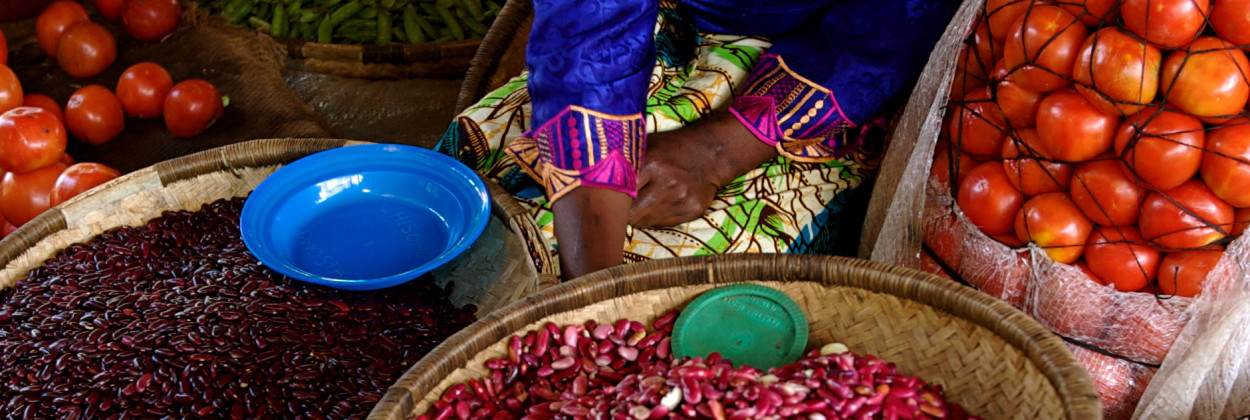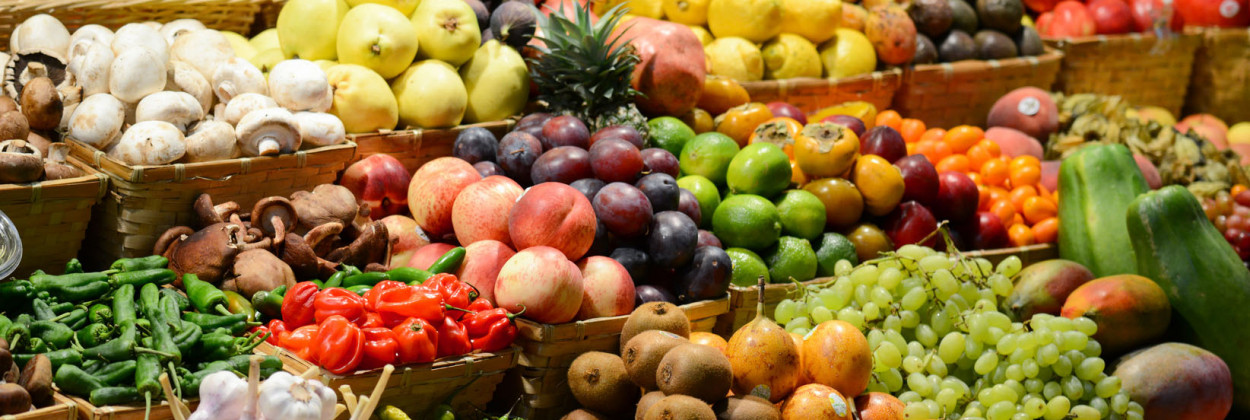This Food Hub is located in the Nakaseke district, in the central part of Uganda. In 2020, it registered a population of 234,600 people.
Generally, Ugandan diets are mainly composed of starch staples especially cereals and roots, tubers and bananas, with legumes being the main protein source. Currently, the food environment is characterized by a transitioning diet manifesting elements of both Westernized and traditional diets, even though the diet remains predominantly plant-based.
The prevalence of stunting, wasting and being underweight among children under the age of five years (under-fives) stands at 29%, 4% and 11% respectively. At the national level (entire population), the prevalence of underweight, stunting and wasting stands at 41%, 27% and 4% respectively.
Approximately 24% of females of reproductive age and 9% of males aged 15-54 years are either overweight or obese.
Vitamin A and iron deficiency are the most common micronutrient deficiencies.
Fish farming, one of the remedies to the economic and nutritional challenges, is dominated by two fish species (catfish and tilapia) and high entry but the higher exit of investors majority of which are smallholders (95%) due to high feeding costs, poor harvest (low productivity) hence low marketability, and limited skills.
Highlights about the work carried out in this Food Hub
Technological innovations in this Food Hub
Aquaculture integration technology for rural and peri-urban areas. The overall objective of the study is to develop cost-effective mass seed production protocols to facilitate hatchery producers to produce quality and sufficient Barbus altianalis (Kisijja) and Labeo victorianus (Ningu) seed for smallholder out-growers with a view of supporting their incomes and nutritional needs. The aspects that will be measured and determined are protocols for live feed production; the combination of diets that are suitable for mass fry/fingerling production, and the unit cost for cost-effective production of fry and fingerlings using various feeds and processes of production.
Wastewater from the hatchery and fish tanks will be used to irrigate the selected vegetables of high value and demand. A layout of mini-irrigation systems will be drawn and made from the hatchery/fish tanks to the gardens.
Solar drying. The overall objective is to produce safe, quality and stable preserved fish products by prolonging their shelf-life and palatability for improved economic value for the processors and fish farmers. The nutrient content of raw materials and preserved, products will be determined after solar drying during the salting primary processing method. A solar tent will be used alongside open solar drying, permitting the brine to drain away during curing fish by salting.
Milling. The overall objective is to produce safe, quality, and stable preserved fish products by prolonging their shelf-life and palatability for improved economic value for the processors and fish farmers. Novel milled fish products will be produced for the market after determining the nutrient content of raw materials and the milled products.
Fish smoking, salting, fermenting. The overall objective is to produce safe, quality and stable preserved fish products by prolonging their shelf-life and palatability for improved economic value for the processors and fish farmers. A PAH-safe kiln will be used for smoking, a solar tent with kenching / pickling for salting, and anaerobic containers for fermenting. Whole fish will be either smoked, sun-dried or salted prior to bio-packaging. Each of these methods has standard operating procedures that will be followed to produce a market-demanded product.
Extrusion and baking. The overall objective is to process different locally available foods into novel convenient nutrient products, such as nutrient-dense flours that have the potential to address nutritional gaps, nutrient-dense snacks that have the potential to substitute low nutritional value snacks, and nutrient-dense noodles from locally produced foods. The nutritional and physicochemical properties of the developed food products will be determined. Product formulations will be developed using locally produced nutritionally rich foods. These will include cereals (maize/sorghum/millet), pulses (common beans) and oil seeds (soybeans/sesame) for all Food Hubs. Additionally, fish products will be used in this Food Hub. Production of nutrient-enhanced floors and popped snacks will entail extrusion cooking while baking will be used to produce baked snacks such as fish crackers and nutrient-enhanced cookies. Cold extrusion will be used for making noodles.
Bio-based packaging. This action is aimed at developing and testing bio-based packages able to preserve the overall quality of food products from different Food Hubs, during storage and transportation. The activities to be done are the following: identification of different raw materials among several agricultural by-products from local regions to be used as material, optimisation of the coating formulation, assessment, characterization of preliminary obtained materials, pre-selection, testing at lab/small scale level of environmentally friendly, affordable, and suitable pack materials. This Food Hub is focused on bio-based packaging for fruit and vegetable products.
Highlights about the research with farmers
FoodLAND surveyed a total amount of 508 farmers in this region with the aim of improving the background knowledge of African smallholder farmers’ decision-making and of individual and contextual conditions. 138 out of these 508 farmers surveyed were women, and the other 370 were men. 57.7% of farmers are members of any local farmers’ associations.
According to the information gathered from the surveys, 74.6% of farmers’ income is lower than the average income in the region, the income of 18.5% of farmers is about the average or somewhat higher, and only 6.9% of farmers stated an income higher than average. Nevertheless, 81.1% of them are able to meet their household’s food needs, 15.7% experience some difficulties, and 3.1% face serious food shortages.
Besides, they have reported major worries regarding the near future regarding the cost price increase of fertilizer or seed (3.82 on a scale from 1 to 5), income reduction (3.34), health disease (3.21), food shortage starvation (2.95), infestation pest (2.77), drought (2.71), and loss of farm job (2.70).
With regard to their interest and propensity to introduce new technologies and/or productions, 90.2% of farmers are extremely or moderately interested in adopting a technological innovation (4.66 on a scale from 1 to 5).
Highlights about the research with consumers
With the aim of enlarging background knowledge of African consumers’ food preferences and behaviours and of their socioeconomic drivers and measuring the current level of dietary diversity, FoodLAND has assessed food consumption at both individual and household levels that provide a good measure of diet quality and diversity. FoodLAND has conducted surveys both in households and out of stores in Kampala, which is paired with this Food Hub. 506 people participated in the survey. Below you can find some highlights extracted from these surveys, regarding consumers’ preferences, habits, incentives, and barriers when it comes to choosing food products for their households.
Urban consumers consider on average their household diet as moderately healthy (around 3.2 on a scale of 5). When asked about their propensity to include in their diets a new food product with augmented nutrient content (e.g., naturally improved bean with high levels of proteins and minerals) that could complement their current household diet, consumers report a moderate level of interest (almost 3.8 on a scale to 5). When looking at the reasons behind the inclusion of a new nutrient-dense food, Ugandan consumers rate the highest possibility of enhancing the healthiness of their household diet, and their trust in doctor’s recommendations. The most rated obstacles are price, the feeling of lower food safety, and potentially unfamiliar taste.
As for the reasons behind usual food purchasing behaviours, respondents in Uganda rate the most on average product characteristics (taste, aroma, colour, shape), food affordability (price) and their willingness to diversify or balance their diet. The food categories mostly lacking in the consumer’s household diet are on average legumes, oils and cereal products.
Consumers were also asked about their interest in buying new local food products. They showed a moderate disposition to buy these local products (3.6 on a scale of 5). Among the reasons that make them choose the new local products, the three consumers rated the most were that they could afford it, it could be easily found where they usually buy food, and it could help local farmers.






